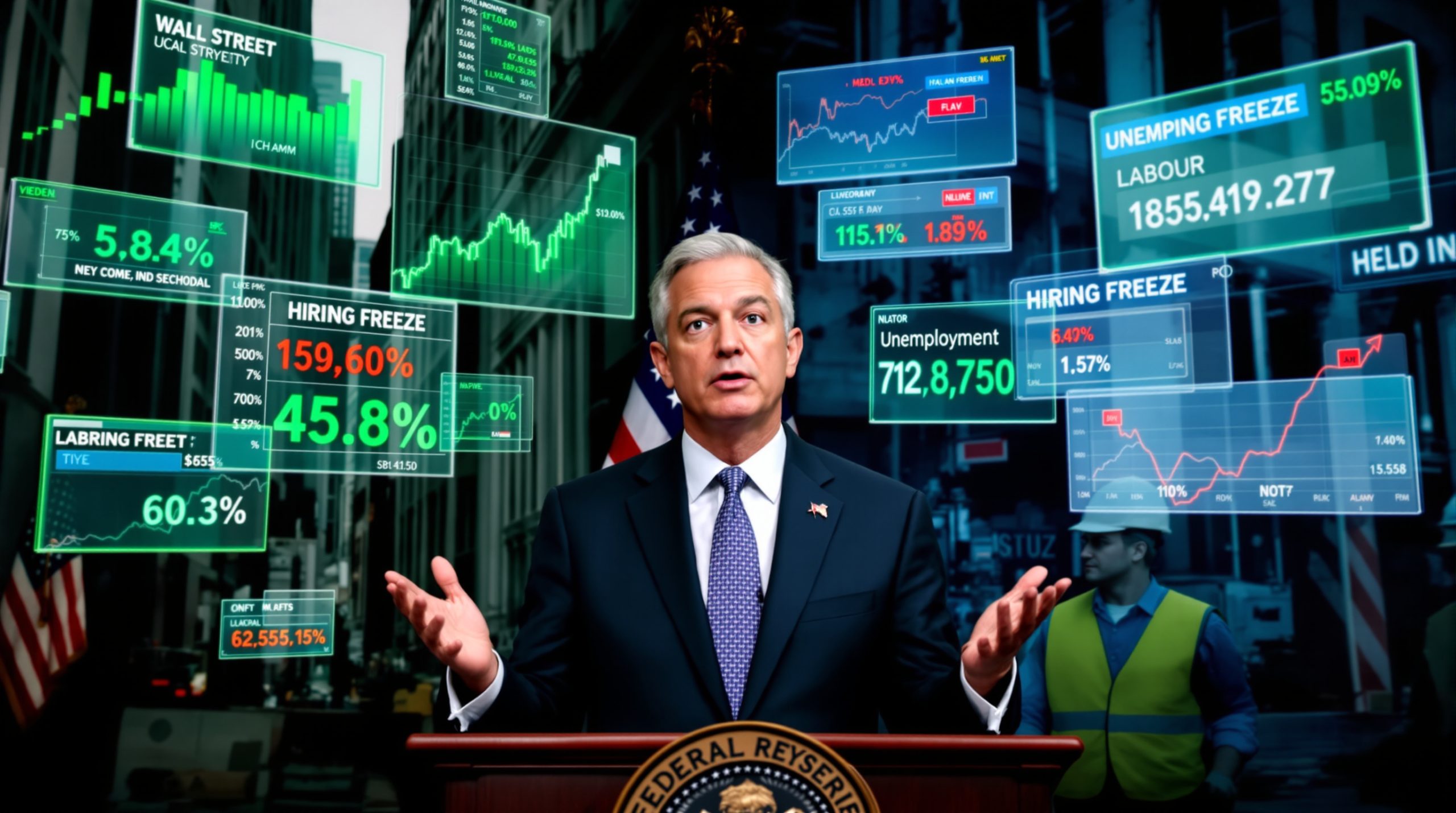Current Global Oil Price Snapshot
As of today, global crude oil benchmarks show significant price movements, with WTI crude trading at $66.77 per barrel, down 2.35%, and Brent crude at $68.81, down 1.97%. These fluctuations reflect immediate market responses to geopolitical tensions, supply dynamics, and economic indicators that continue to shape the energy landscape in 2025. Many analysts are already preparing oil price crash analysis to understand these recent movements.
| Benchmark | Current Price | Change | % Change |
|---|---|---|---|
| WTI Crude | $66.77 | -$1.61 | -2.35% |
| Brent Crude | $68.81 | -$1.38 | -1.97% |
| Murban Crude | $70.28 | -$1.21 | -1.69% |
| Natural Gas | $3.320 | +$0.106 | +3.30% |
| Gasoline | $2.152 | -$0.036 | -1.62% |
According to real-time price data from Bloomberg Energy, crude oil prices today are experiencing significant volatility, with most benchmarks showing declines while natural gas prices buck the trend with a notable increase.
What's Driving Today's Oil Price Movement?
The most immediate factor affecting crude oil prices today is former President Trump's comments regarding potential tariffs, which triggered a notable decline across major oil benchmarks. This political development has overshadowed other market fundamentals, demonstrating how quickly geopolitical statements can impact global energy markets.
Key Price Influencers Today:
- Trump's tariff comments creating market uncertainty
- OPEC+ production decisions and compliance levels
- Ongoing Red Sea shipping disruptions from Houthi rebel attacks
- Recent U.S. inventory data showing unexpected supply increases
- Shifting demand forecasts from major economies
"The world must prepare to address energy security threats," warned the IEA Head in a statement earlier today, highlighting the increasing volatility in global energy markets as geopolitical tensions rise.
How Do Regional Oil Prices Compare Globally?
Middle Eastern Crude Varieties
Middle Eastern crude benchmarks show varied performance with most tracking the global downward trend. Iran Heavy is trading at $64.96 (-1.16%), while Basra Light shows a more significant decline at $71.69, down 4.78% over recent sessions. These regional variations highlight how geopolitical factors affect specific oil streams differently.
| Middle East Benchmark | Price | Change | % Change |
|---|---|---|---|
| Iran Heavy | $64.96 | -$0.76 | -1.16% |
| Basra Light | $71.69 | -$3.60 | -4.78% |
| Saharan Blend | $68.65 | -$0.72 | -1.04% |
| Murban | $76.34 | -$1.97 | -2.52% |
The steeper decline in Basra Light can be directly linked to Iraq's recent production increase of 80,000 barrels per day across three key fields, creating additional supply pressure on regional markets.
North American Crude Varieties
North American crude varieties show more resilience with several posting slight gains. Western Canadian Select is trading at $56.03 (+0.09%), while Louisiana Light shows stronger performance at $72.40, up 2.46%. The regional price differences reflect transportation constraints, quality differentials, and local market dynamics.
| North American Benchmark | Price | Change | % Change |
|---|---|---|---|
| Western Canadian Select | $56.03 | +$0.05 | +0.09% |
| Canadian Condensate | $70.53 | +$0.05 | +0.07% |
| Louisiana Light | $72.40 | +$1.74 | +2.46% |
| Eagle Ford | $64.86 | +$0.05 | +0.08% |
Louisiana Light's outperformance stems from regional refining demand and its quality characteristics, which currently command a premium in the market.
Why Are Oil Prices Falling Today?
Immediate Market Catalysts
The immediate trigger for today's price decline appears to be Trump's comments about potential tariffs, which has raised concerns about global trade disruptions. Markets are reacting to the possibility of increased US tariffs and inflation that could potentially slow economic growth and reduce oil demand.
The impact was swift and significant, with crude oil prices dropping approximately 2% within hours of the announcement, demonstrating the market's sensitivity to geopolitical developments and trade policy.
Supply-Side Pressures
Recent data indicates growing supply pressures that are weighing on prices:
- U.S. crude inventories have increased unexpectedly, threatening the recent price rally
- OPEC's recent announcement about needing an additional 19.5 million bpd refining capacity by 2050
- Saudi Arabia's crude exports jumped by 400,000 bpd in April
- Iraq has increased oil output by 80,000 bpd across three key fields
These supply increases come at a time when the market is already concerned about demand, creating a bearish sentiment among traders and investors.
Demand Concerns
Several demand-side factors are also contributing to the current price environment:
- China's LNG imports have declined for eight consecutive months, indicating weakening energy demand in the world's largest growth market
- European economic indicators showing mixed signals amid concerns about industrial output
- Rising interest rates affecting global economic growth projections
- Seasonal demand patterns transitioning between spring and summer
The combination of increasing supply and uncertain demand creates a challenging environment for crude oil prices, with the market struggling to find direction amid conflicting signals.
How Do Current Prices Compare to Historical Trends?
Short-Term Price Trajectory
Current oil prices are near two-week highs despite today's decline, indicating recent strength in the market before today's pullback. The WTI benchmark at $66.77 represents a significant recovery from lows seen earlier this year but remains well below the $80+ levels seen during peak periods in recent years.
This price level puts crude oil in a middle ground—well above production costs for most producers but still providing some cushion for consumers compared to recent peaks.
Year-to-Date Performance
Oil prices have demonstrated considerable volatility in 2025, with several key factors driving the market:
- Red Sea shipping disruptions adding risk premiums, with recent Houthi attacks on Greek vessels driving prices up 2% earlier this week
- OPEC+ production adjustments attempting to balance the market, with the UAE recently stating the market is "thirsty for more OPEC+ barrels"
- Economic growth concerns in major economies, particularly China's ongoing energy import decline
- Seasonal demand patterns creating cyclical price movements
- Geopolitical tensions in multiple regions, including Middle East conflicts and global trade disputes
Standard Chartered recently dismissed the "phantom barrel" theory, stating they see no hidden surplus in the market, suggesting current price levels may reflect genuine supply-demand fundamentals rather than speculative activity.
What Are Analysts Saying About Future Oil Prices?
Expert Market Assessments
Recent analyst reports provide mixed outlooks for crude oil prices:
- Standard Chartered has dismissed the "phantom barrel" theory, stating they see no hidden surplus in the market
- The UAE has indicated that the oil market is "thirsty for more OPEC+ barrels"
- The IEA head has warned that the world must prepare to address energy security threats
- OPEC's latest projections suggest continued long-term demand growth, with an additional 19.5 million bpd refining capacity needed by 2050
These expert assessments paint a picture of a market that may be temporarily oversupplied but remains fundamentally balanced in the medium to long term, with significant infrastructure investments needed to meet future demand. The oil price forecast for the coming months remains cautiously optimistic despite current volatility.
Technical Market Indicators
Technical analysis suggests oil prices are at a critical juncture:
- Current prices testing important support levels
- Trading volumes increasing during recent price movements
- Momentum indicators showing mixed signals
- Seasonal patterns suggesting potential summer demand increases
Traders are closely watching these technical indicators for signals about the market's next major move, with many suggesting that current price levels represent a decision point that could determine the trend for the coming months.
How Are Geopolitical Tensions Affecting Oil Markets?
Middle East Conflicts
The ongoing situation in the Red Sea continues to impact global shipping and oil transportation. Recent reports indicate Houthi rebels have hit a second Greek vessel, causing oil prices to climb 2% in response to these attacks before today's decline. These disruptions add risk premiums to oil prices and create uncertainty in shipping routes.
The frequency and severity of these attacks have forced shipping companies to reroute vessels around the Cape of Good Hope, adding significant time and cost to oil transportation from the Middle East to European markets.
Global Trade Relations
International trade tensions are increasingly affecting energy markets:
- Trump's tariff comments creating immediate market reactions, with crude oil prices falling over 2%
- China's rare earths export controls impacting global supply chains, with Chinese exporters reportedly rerouting rare earths to keep supplying the U.S.
- OPEC banning five media outlets from its Vienna meeting, suggesting internal tensions within the organization
- Baghdad-KRG oil deal stalling despite reports of breakthrough, affecting Iraq's export potential
These trade tensions create additional uncertainty in already volatile markets, with traders attempting to price in the potential tariffs impact on markets and global energy flows.
What's Happening with Natural Gas Prices?
Natural Gas Market Dynamics
While oil prices are declining, natural gas is showing strength with prices up 3.30% to $3.320. This divergence highlights the different market fundamentals affecting these energy commodities:
- Europe bracing for rising gas demand after price volatility hits 2021 low
- EU Parliament endorsing eased natural gas storage targets
- Equinor making a gas discovery near a huge Arctic oilfield
- Canada warming up to fossil fuels with new LNG export terminal
The natural gas market's divergence from crude oil prices demonstrates how these energy commodities can be driven by different seasonal factors, regional dynamics, and supply-demand fundamentals despite being part of the broader energy complex. Recent natural gas price forecasts suggest continued recovery through 2025.
The EU's decision to ease natural gas storage targets suggests confidence in supply stability, while new discoveries and export terminals point to growing global natural gas trade in the coming years.
How Are Oil Companies Responding to Current Market Conditions?
Industry Strategic Adjustments
Energy companies are adapting their strategies to the current price environment:
- Equinor reviving interest in the $12 billion Bay du Nord project off Newfoundland
- ExxonMobil announcing 75 million barrels in new discoveries at Hibernia and Hebron fields
- Chevron preparing to close Hess acquisition
- Nova Scotia reopening offshore natural gas exploration after a 2018 hiatus
These strategic moves suggest major energy companies remain confident in long-term demand despite current price volatility, with significant investments in new production capacity continuing across multiple regions.
Investment and Production Trends
The current price environment is influencing investment decisions across the industry:
- Supermajors planning to significantly boost oil and gas output in Nigeria
- Turkish firms launching oil and gas exploration offshore Pakistan
- Uganda searching for JV partner to explore oil block
- Saudi Aramco in U.S. supply talks with Commonwealth LNG
These investments indicate that despite short-term price fluctuations, energy companies continue to make long-term bets on global oil and gas demand, particularly in emerging markets and regions with untapped potential.
The diversification of investment locations also suggests companies are spreading geopolitical risk across multiple jurisdictions rather than concentrating in traditional production regions.
What Should Investors Watch for in Oil Markets?
Key Market Indicators
Investors should monitor several critical factors that could impact oil prices in the near term:
- OPEC+ compliance with production agreements, especially following recent tensions evidenced by the banning of media outlets from Vienna meetings
- U.S. inventory data and production trends, with recent inventory spikes threatening the price rally
- Federal Reserve interest rate decisions affecting dollar strength and economic growth
- Chinese economic indicators and energy import data, with eight consecutive months of declining LNG imports raising concerns
- Developments in Middle East conflicts and shipping disruptions, particularly Houthi attacks in the Red Sea
These indicators provide early warning signs of potential market shifts and can help investors anticipate price movements before they fully materialize.
Potential Market Catalysts
Several upcoming events could trigger significant price movements:
- OPEC+ meetings and production adjustment announcements
- U.S. economic data releases
- Further developments in Red Sea shipping security
- Seasonal demand shifts during summer driving season
- Policy announcements from major economies regarding energy security
Investors should remain vigilant about these potential catalysts, as any one of them could significantly impact crude oil prices today and in the coming weeks.
Frequently Asked Questions About Oil Prices
Why are oil prices so volatile right now?
Oil prices are experiencing heightened volatility due to a combination of factors including geopolitical tensions in the Middle East, shifting OPEC+ production strategies, uncertain global economic growth, and the immediate impact of political statements about potential trade policies. These multiple influences create a complex market environment where prices can shift rapidly in response to new developments.
The market is currently caught between supply-side pressures (increasing output from Saudi Arabia and Iraq) and demand concerns (declining Chinese imports and potential trade disruptions), creating a particularly uncertain pricing environment.
How do crude oil benchmarks differ?
Different crude oil benchmarks represent specific qualities and geographic origins of oil:
- WTI (West Texas Intermediate): Light, sweet crude primarily traded in the U.S.
- Brent Crude: Light, sweet crude from the North Sea, used as an international benchmark
- Dubai/Oman: Medium sour crude representing Middle Eastern oil
- Murban Crude: Light sweet crude from Abu Dhabi
These benchmarks trade at different prices due to quality characteristics, transportation costs, and regional supply-demand dynamics.
The quality differences primarily relate to sulfur content and API gravity, with "lighter" and "sweeter" (lower sulfur) crudes typically commanding premium prices because they're easier and less expensive to refine into high-value products like gasoline and diesel.
How do oil prices affect gasoline prices?
Crude oil typically accounts for about 50-60% of the retail price of gasoline. While gasoline prices generally follow crude oil price trends, the relationship isn't always immediate or proportional due to factors like:
- Refining capacity and utilization
- Seasonal blending requirements
- Local taxes and regulations
- Transportation and distribution costs
- Retail competition in local markets
Currently, gasoline futures are trading at $2.152, down 1.62%, generally tracking the decline in crude oil prices.
The remaining 40-50% of gasoline prices comes from refining costs, distribution and marketing expenses, and taxes, which is why gasoline prices can sometimes move differently than crude oil prices, especially during seasonal transitions or when refinery disruptions occur.
Further Exploration:
Readers interested in tracking real-time oil price movements and energy market news can explore related educational content at Market Index Crude Oil, which offers comprehensive coverage of global energy markets, price charts, and industry analysis.
Disclaimer: This article contains market analysis based on current data and expert opinions. Energy markets are inherently volatile and subject to rapid changes based on geopolitical events, economic data, and supply-demand shifts. Investors should conduct their own research before making investment decisions based on the information presented.
Interested in Spotting the Next Major Mineral Discovery?
Discovery Alert's proprietary Discovery IQ model instantly notifies investors of significant ASX mineral discoveries, turning complex data into actionable insights for both short-term traders and long-term investors. Explore why historic discoveries generate substantial returns by visiting Discovery Alert's dedicated discoveries page and position yourself ahead of the market.




